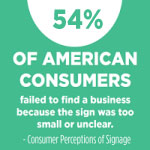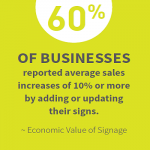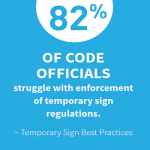Sign Research Foundation, International Sign Associations and Utah Sign Association Combine Forces
May 1, 2015
For a 180◦ Win-Win-Win Sign-Code Change
The Roy City, UT city planners and city council recently had a sign code that completely disallowed pole signs and greatly diminished the ability of electronic signs to provide their benefits. Now the city’s attitude has reversed itself from “We only want monument signs” to “Let’s make sure the EMC’s [electronic message centers] are big enough so the text can be read while driving down the street,” reports Vince Coley of Rainbow Sign, a member of the Utah Sign Assn.
How did this happen?
Sign-industry collaboration. Roy City was struggling with its sign code, so it contacted the Utah Sign Assn. (USA), reported Patti King, USA’s executive director. USA is an affiliate of the Intl. Sign Assn. (ISA), and, subsequently, James Carpentier, ISA’s manager of state and local government affairs, presented Roy City with PowerPoint documentation about the power of signs.
Here’s the chronology of events from Patti King:
Ginny Kirch, a planning commissioner from Roy City, contacted me on March 10 and said their city was considering banning pole signs in favor of monument signs. When I learned the community resides next to I- 15, I warned her about the potential serious economic impact this could have on their community if freeway traffic couldn’t see their businesses. I mentioned another Utah city that had increased their freeway sign heights from 24 to 60 feet to bring additional traffic into their town. I sent her several resources she could share with the commission and planning staff.
I also copied James to open the door to conversation between he and Roy City. Their planning director, Steve Parkinson, asked if I would make a presentation to the planning commission, city council and staff about the “good, bad and ugly of signs.” I suggested inviting other nearby communities to the presentation. He agreed and invited peers from nearby communities. James and I would make the presentation. I reached out to YESCO’s Jeff Young, who volunteered to help, as did Vince Coley. James and YESCO’s Mike Freeborg developed the presentations.
James presented a 25-slide PowerPoint presentation entitled “Legal Issues in Sign Regulation.” He also showed a 61-slide PowerPoint that discussed regulations that encourage great design, considerations when mandating monument signs, and economic considerations. Finally, his 43-slide treatise called Signs 101 Workshop gave an overview of the types of signs and their functions.
So what happened?
Jeff Young summated: “We concluded that we've never seen anything like that . . . ever. The city planners and city council took an absolute 180◦ reversal on their push for no more pole signs and restrictions on electronics and are now looking for ways to make their sign code much more flexible and supportive of business. If I hadn't been there myself, I wouldn't have believed it.”




